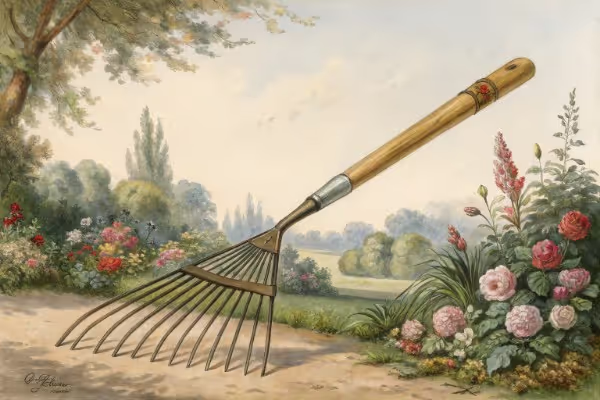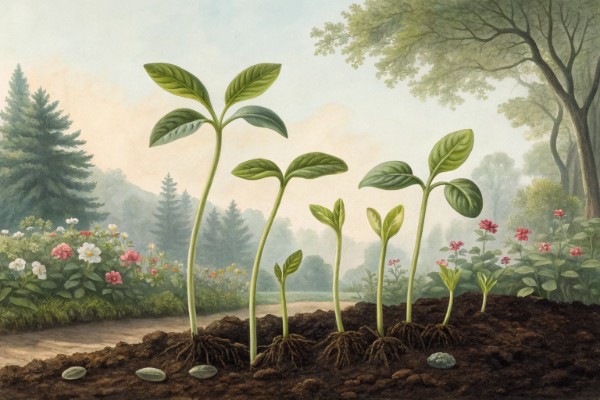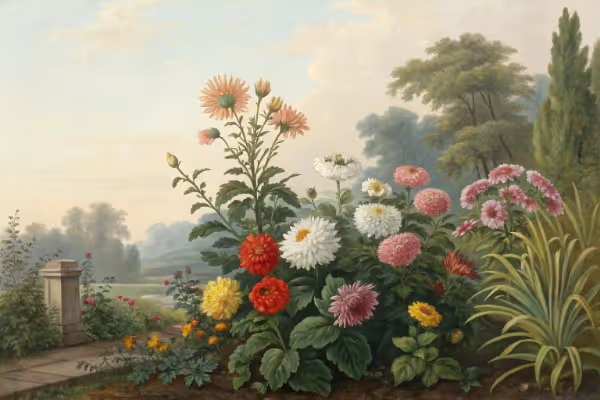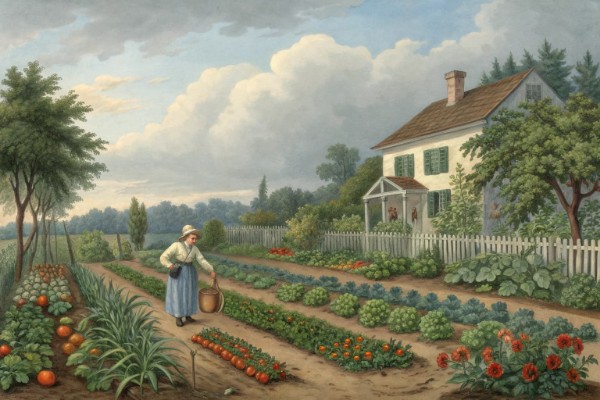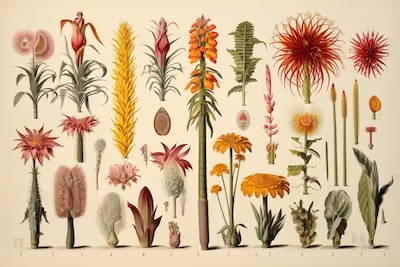Pollinators at Home: Inviting Nature Into Your Garden

Pollinators
Want more blooms, fruits, and veggies in your garden? Invite pollinators—bees, butterflies, hummingbirds—by planting nectar-rich flowers and ditching harsh chemicals. Gardens buzzing with active pollinators produce higher yields, healthier plants, and vibrant diversity. Here's how to turn your yard into a haven these hardworking guests can't resist.
Cheatsheet: Boost Pollinators in Your Yard Fast
🌼 Pick Diverse Plants
- Select at least 3 bloom periods: spring, summer, fall
- Clusters attract more pollinators
- Native species support local bees, butterflies, and hummingbirds
🦋 Avoid Pesticides
- Skip neonicotinoids (look for "bee-friendly" on product labels)
- Use insecticidal soap or hand-pick pests
💧 Provide Water
- Shallow dishes with pebbles give bees safe landing
- Refill daily in temps >80°F/27°C
🏡 Build Habitat
- Leave bare soil patches for ground-nesting bees
- Install bee hotels or bundles of hollow stems
- Let some leaves lie for moth and butterfly larvae
🌱 Grow Edibles for Pollinators
- Plant herbs like basil, thyme, and mint—harvest and share blooms
- Use heirloom veggies that flower: squash, tomatoes, strawberries
- Boost self-sufficiency: More pollinators, better harvests
🌍 Stats That Matter
- 80% of flowering plants depend on animal pollinators
- 1 of every 3 bites of food relies on pollinators
- 90% of wild plants need pollinators to reproduce
🧰 Tools and Products You'll Need
- Hand trowel
- Watering can or hose
- Native seeds or starts
- Bee hotel kits or hollow bamboo
- Shallow dish plus rocks/pebbles
- Mulch (leave a few gaps for bees)
🔀 Simple Steps
- List your regional native plants that bloom in different seasons
- Plant in sunny, sheltered spots—group by species for impact
- Add water station, refreshing as needed
- Set up bee hotel or leave bamboo in a dry spot
- Skip synthetic pesticides entirely
- Let leaves, sticks, and bare soil remain where possible
Pollinators: Garden Allies With a Purpose
I learned early on, from a wise old beekeeper named Gus, that pollinators keep gardens alive. He'd puff his pipe, squint toward his hives, and say, "Without them, kid, nothing fruitful happens."
Years later, growing lavender, sunflowers, and tomatoes myself, I recognized Gus was right. Pollinators—bees, butterflies, hummingbirds, bats—carry the subtle magic that transforms flowers into food.
The Pollinator's Preference: What Draws Them In
First things first: color matters. Pollinators gravitate toward bright shades like blues, purples, yellows, and reds.
Single-flowered varieties offer simple, accessible nectar and pollen, unlike showy double-flowered hybrids. I once replaced my double-petaled marigolds with elegant, single-petal cosmos; bees and butterflies flocked in greater numbers almost immediately.
Choosing Plants Pollinators Can't Resist
I plant thoughtfully, aiming for blooms from early spring to late autumn. Here's what reliably draws pollinators through the seasons:
- Spring: Crocus, Snowdrops, and Wild Lilacs.
- Summer: Coneflowers, Bee Balm, Salvia, and Zinnias.
- Autumn: Asters, Goldenrods, and Autumn Sages.
Last season, I tucked in a few borage plants amid my herbs—its blue starflower blooms became honeybee catnip within days.
Creating a Pollinator-Friendly Habitat
Pollinators need more than pretty blooms, though—they require shelter, water, and safety. A shallow dish filled partially with stones and water offers a much-needed drink without risking drowning.
Leaving sections of my yard undisturbed has surprised me—I often discover native bees nesting underground or butterflies sheltering in leaf piles. Nature tends toward thriving, given a chance.
Avoiding Harmful Practices
Pesticides, sadly common, disrupt pollinator populations more severely than many realize. I've swapped synthetic sprays for companion planting—marigolds near tomatoes, nasturtiums among cucumbers—to manage pests naturally.
"Over 40% of pollinator species face declining populations globally. Our gardens play a significant role in reversing these troubling trends." - The Xerces Society
Attracting Butterflies and Hummingbirds
Butterflies and hummingbirds require nectar-rich flowers, with butterflies favoring wider landing pads—think Echinacea and Rudbeckia.
Hummingbirds prefer tubular blossoms, sipping eagerly from honeysuckle, trumpet vine, and red cardinal flower. Watching them zip energetically among blooms always proves entertaining.
Patience Pays Off
Gardening, at its essence, teaches patience. After carefully selecting pollinator-attracting plants and adopting gentle gardening practices, pollinator numbers increased in my garden year over year.
The lesson? Provide what these small but mighty creatures require—then watch as they reward your efforts tenfold.

Want smarter plant choices? 🪴
Frequently Asked Questions about Attracting Pollinators to Your Garden
Which plants best attract pollinators?
Select native flowering plants such as coneflowers, bee balm, lavender, milkweed, and salvia. Incorporating plants native to your area naturally draws local species of pollinators and provides them with a familiar food source.
What colors appeal most to pollinators?
Pollinators often favor bright colors—especially purple, blue, yellow, and white blossoms. For instance, bees are attracted to blues and yellows, butterflies prefer vibrant purples and reds, and hummingbirds gravitate toward red and orange hues.
How can I provide water for pollinators safely?
A shallow basin filled with stones, marbles, or twigs offers a safe source of hydration. Ensure water levels remain shallow, roughly 1-2 inches (2.5-5 cm), allowing pollinators to drink without risking drowning. Replace the water regularly to maintain cleanliness and freshness.
Is mulching suitable around pollinator-friendly plants?
Yes, applying a layer of organic mulch—about 2-3 inches (5-7.5 cm)—such as shredded bark or compost aids soil moisture retention, suppresses weeds, and moderates soil temperatures. Leave some bare soil patches available, enabling ground-nesting bees to establish their homes comfortably.
What should I avoid using in pollinator-friendly gardening?
Avoid chemical pesticides and herbicides, which often harm beneficial insects. Instead, implement natural pest control methods like attracting beneficial insects, hand-picking pests, or applying insecticidal soap. Maintaining a chemical-free garden protects pollinators and supports biodiversity.
Do pollinator gardens require full sun?
Most flowering plants favored by pollinators thrive under 6-8 hours of direct sunlight daily. However, partial shade-tolerant plants such as columbine or bleeding hearts can attract pollinators to gardens with less sunlight, expanding opportunities to draw beneficial insects into diverse spaces.
How can I support pollinators throughout all seasons?
Plan your plant selections carefully to ensure continuous blooming from early spring through late fall. Early bloomers like crocuses and late-season plants such as asters and goldenrods create a continuous supply of nectar and pollen, sustaining pollinators throughout the growing season.
Pollinators aren’t just visitors—they’re old allies, shaping every vibrant inch of our gardens. When you plant native flowers, skip the pesticides, and leave a patch of wild, you’re doing more than gardening; you’re building a safe haven for bees, butterflies, and hummingbirds. These small changes punch well above their weight, setting the stage for fruit, seed, and color year after year. If you’re wondering about the best plants for your climate zone, check out this comprehensive guide—the right choices mean more blooms and more buzz. Give these tireless workers a reason to stay, and your patch of green will never be the same. In the end, a garden humming with pollinators beats a silent one every time.
Pollinators for Self-Sufficient Homesteading
Cultivate High-Yield Crops Through Pollination
Apples, almonds, pumpkins, cucumbers, and tomatoes yield up to 50–90% more produce when frequented by native pollinators.
- Plant pollinator-preferred wildflowers: goldenrod, milkweed, bee balm, echinacea.
- Overlap blooming times to sustain pollinator activity throughout growing season.
- Convert unused yard corners into native wildflower patches for efficient pollinator habitat.
Beeswax and Honey: Nutritional Self-Reliance
Raw honey contains antioxidants, enzymes, vitamins B and C; natural antibacterial properties promote wound healing.
- One hive yields approximately 30–100 lbs (14–45 kg) honey annually.
- Use beeswax for candles, lip balms, waterproofing materials, and non-toxic wood polishes.
- Honey harvested responsibly from home-managed hives requires minimal ongoing expense.
Low-Maintenance Hives for Busy Homesteads
Select hive types that save energy and resources:
- Top-bar hives: simple to build, lightweight to manage, less costly equipment.
- Warre hives: mimic natural bee habitat, minimize intervention, suitable for colder climates down to -25°F (-32°C).
- Use untreated cedar wood to naturally resist decay and pests.
Sustainable Pollinator Practices
Boost pollinator populations and garden health:
- Build solitary bee hotels with bamboo tubes or drilled untreated wood blocks.
- Provide shallow water stations filled with pebbles for safe bee hydration.
- Avoid pesticides: use neem oil or diatomaceous earth to deter pests safely without harming pollinators.
Find out which plants will thrive in your garden!
Answer a few fun questions and get custom plant recommendations perfect for your space. Let’s grow something amazing together!

start your season
